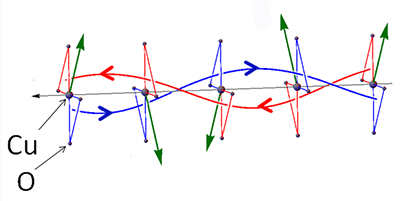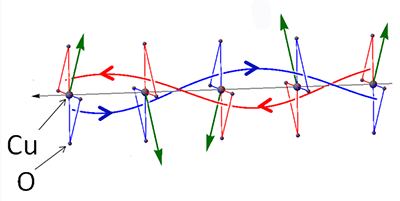Twisting Microscopic Currents
How charges pair up and flow with zero resistance in copper-oxide-based (“cuprate”) high-temperature superconductors is still unknown. Many physicists believe the answer lies in explaining the pseudogap phase of these materials—the state above the superconducting transition temperature in which the energy spectrum of electrons starts to form a partial gap. As reported in Physical Review Letters, insight into how electrons interact in the pseudogap phase may come from a new theory explaining an usual optical effect in the cuprates.
Experiments have shown that polarized light reflected from the surface of a cuprate in the pseudogap phase has a slightly rotated angle of polarization. The effect—called Kerr rotation—occurs in magnetic materials (microscopes use it to distinguish magnetic domains.) But in a magnet, which has a distinct north and south pole, the Kerr rotation angle changes sign when the sample is flipped on its back. In cuprates, this sign change is absent, an effect that has been difficult to explain.
Sergey Pershoguba and his colleagues at the University of Maryland, College Park, show that the peculiar Kerr effect is explicable if the light is interacting with local magnetic fields that twist by degrees from one copper-oxide layer to the next. These fields could come from microscopic loops of current near each copper atom—an idea that has been proposed to explain the physics of the pseudogap phase. Unlike most theories for the pseudogap phase, which assume electron interactions are confined to the copper-oxide plane, Pershoguba et al.’s model implies interactions between electrons in different planes matter, too. – Jessica Thomas





